Abstract
The bacterial population of the water supplied with ornamental fish purchased from retail outlets was examined qualitatively and quantitatively. As many as 109 viable aerobic organisms per 100 ml were present, with fecal coliform counts as high as 105 per 100 ml. Citrobacter, Escherichia, Pseudomonas, and Vibrio were isolated from 75% or more of the samples, whereas Aeromonas, Alcaligenes, Enterobacter, Flavobacterium, and Streptococcus were isolated from 45 to 65% of the samples. Pseudomonas aeruginosa, Edwardsiella tarda, and Klebsiella pneumoniae were also isolated.
Full text
PDF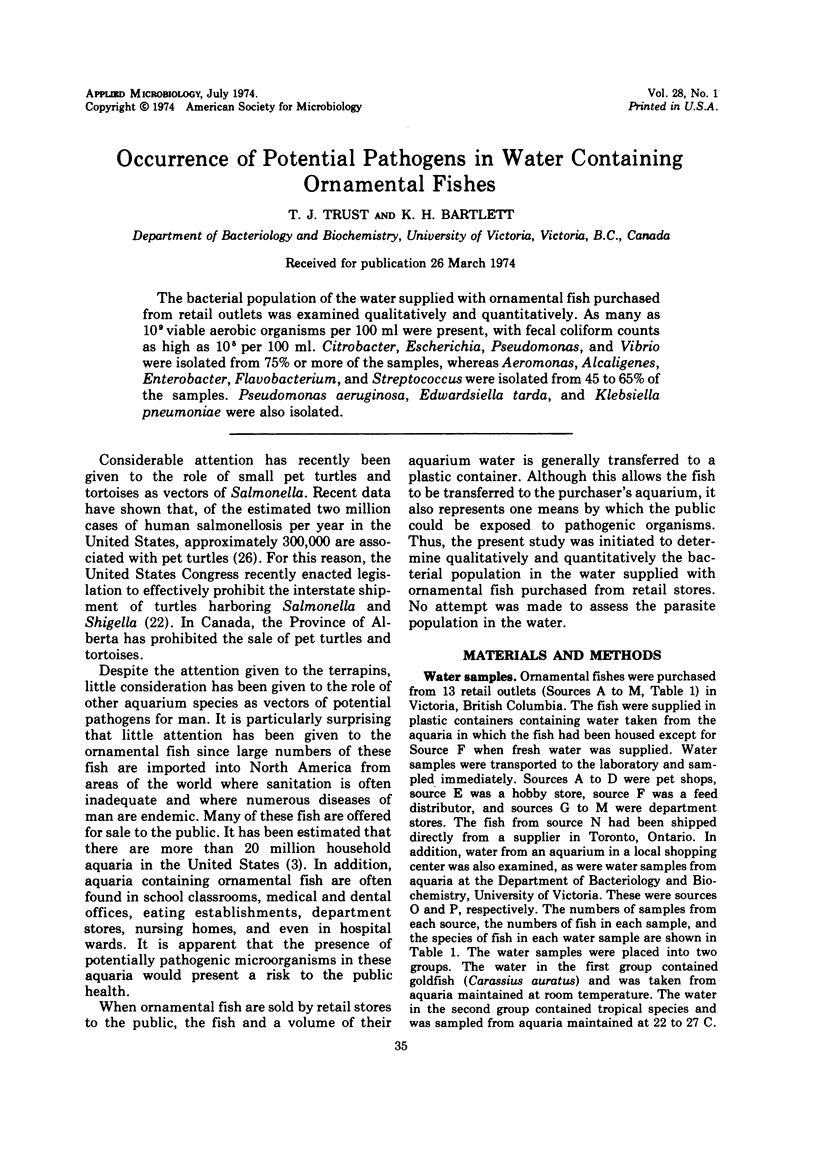
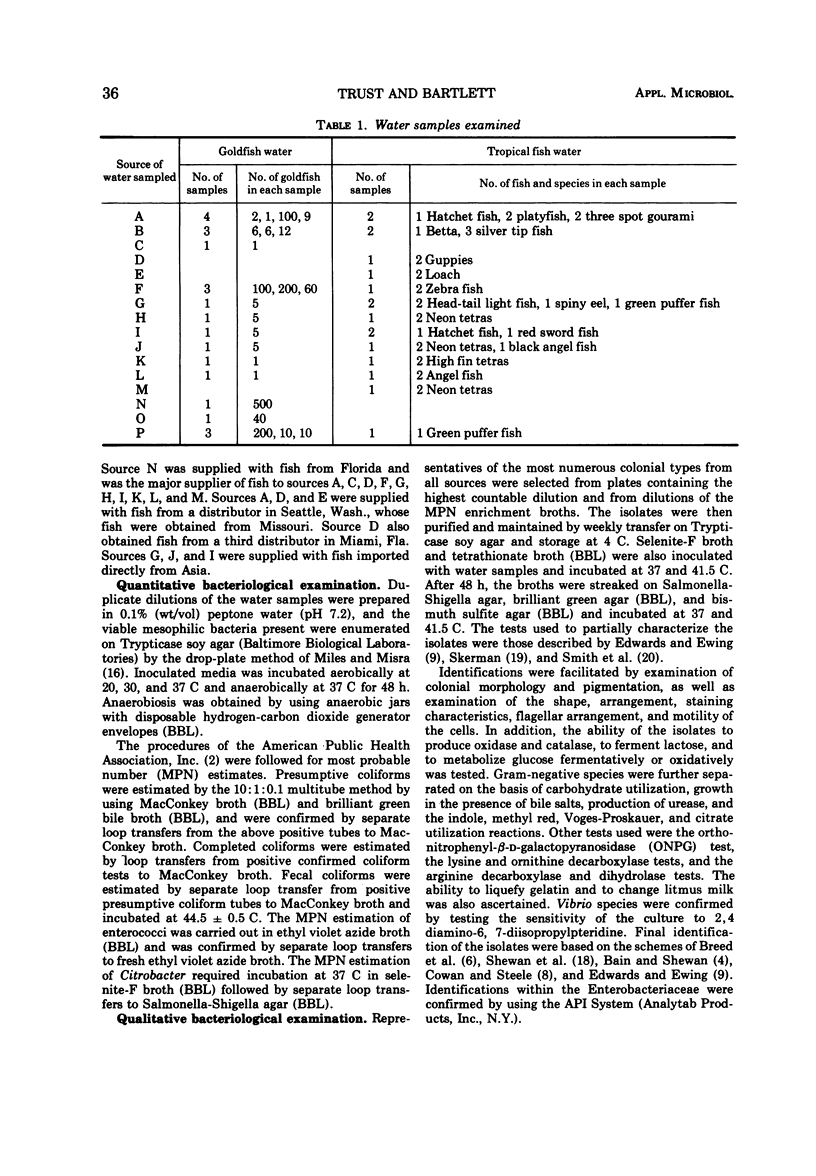
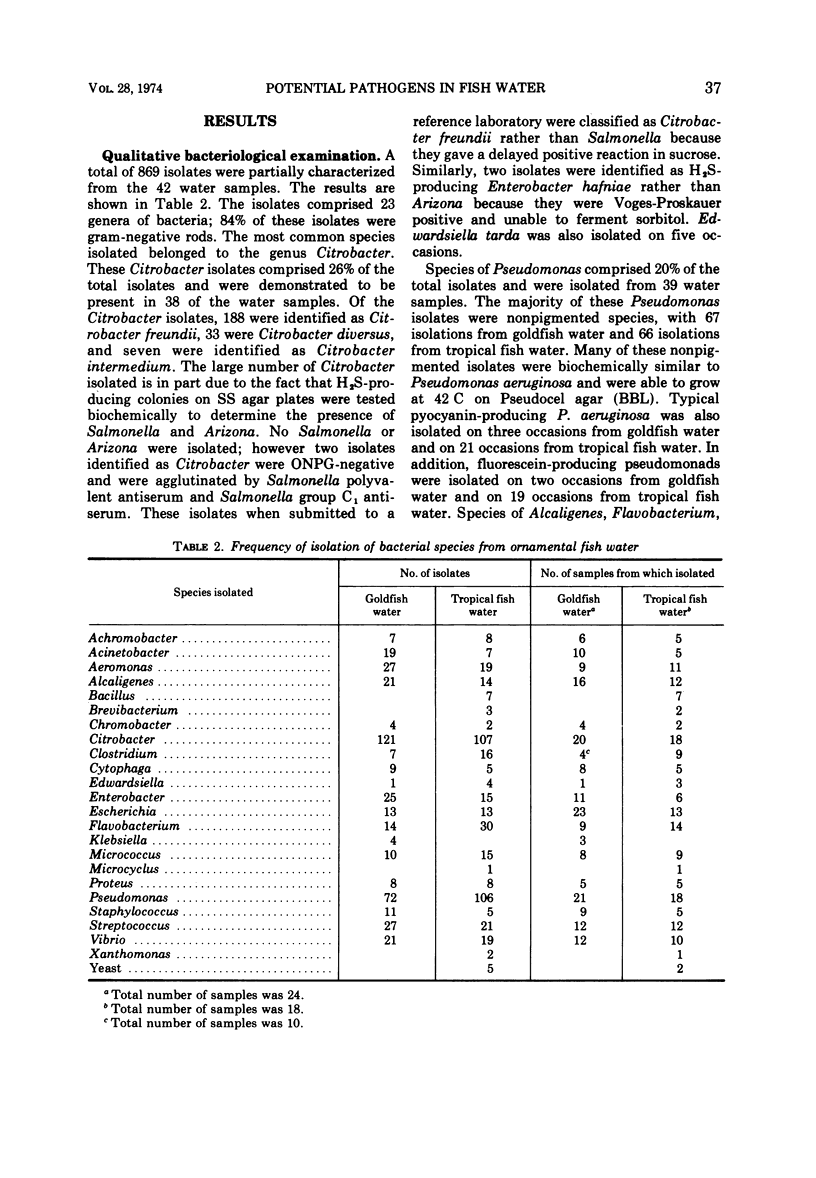
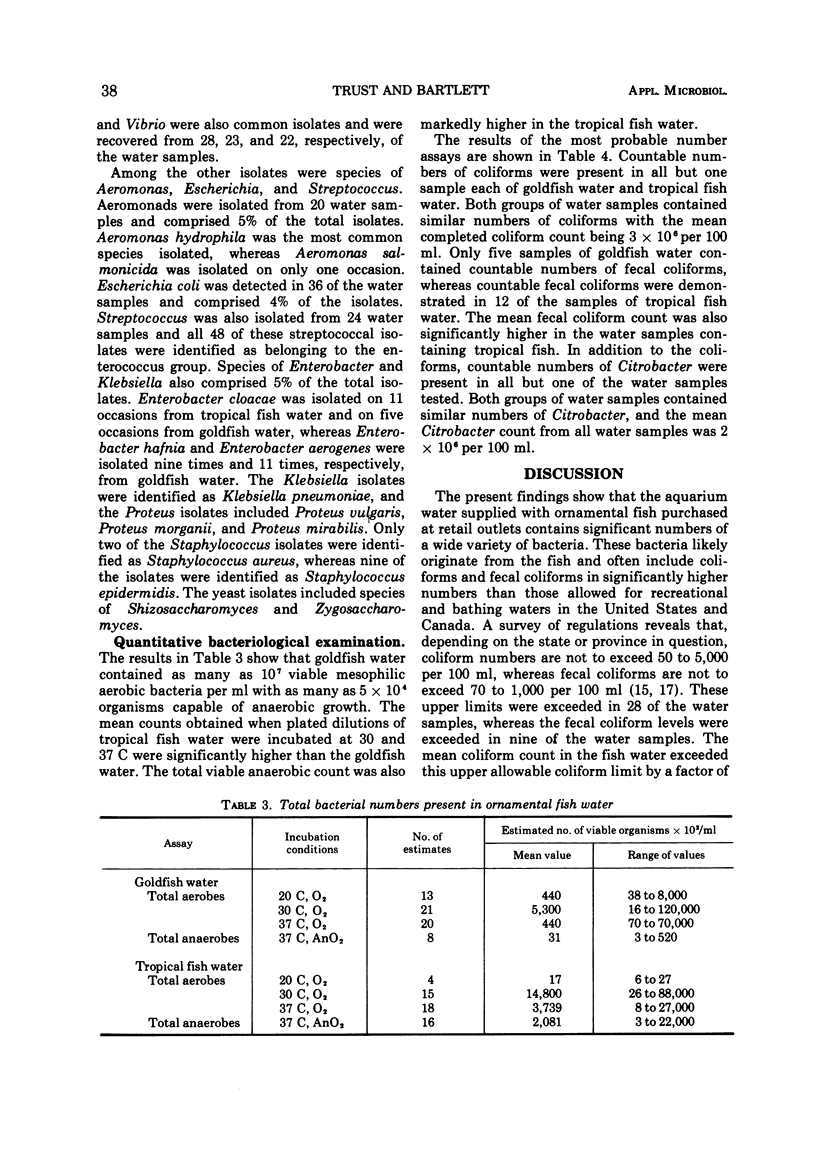
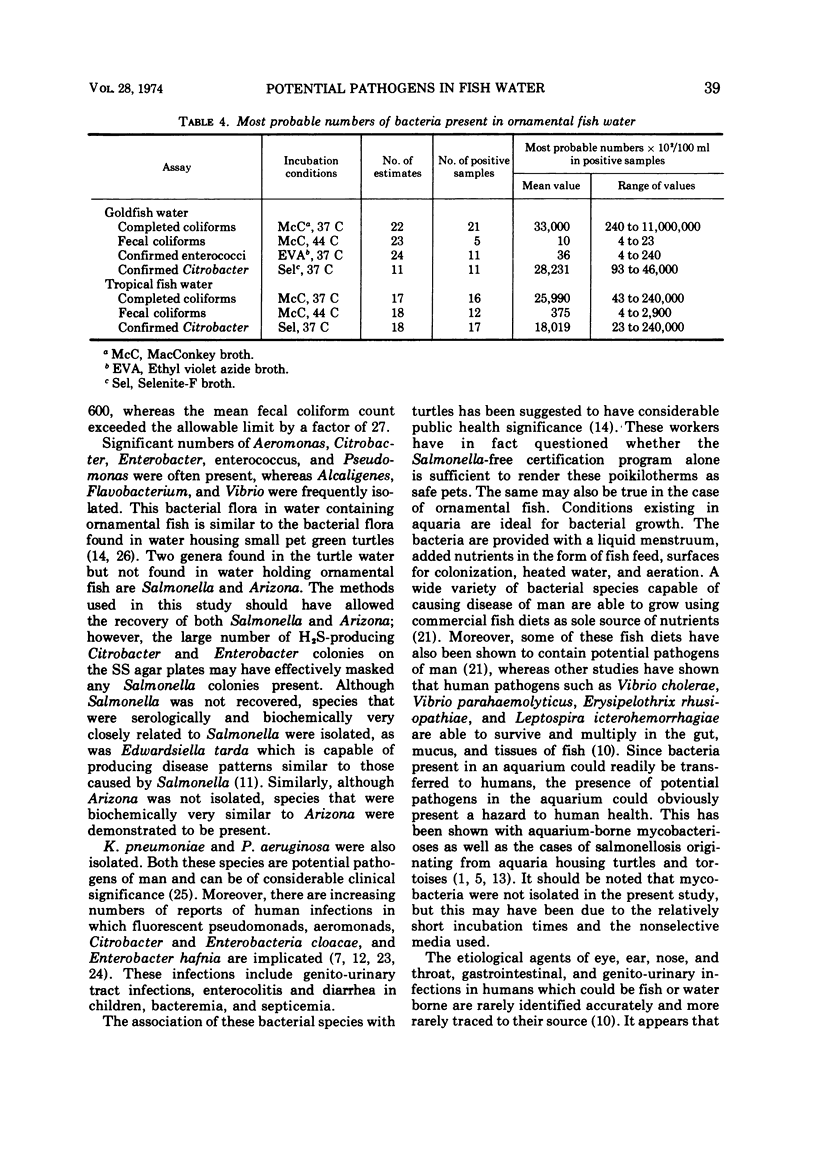
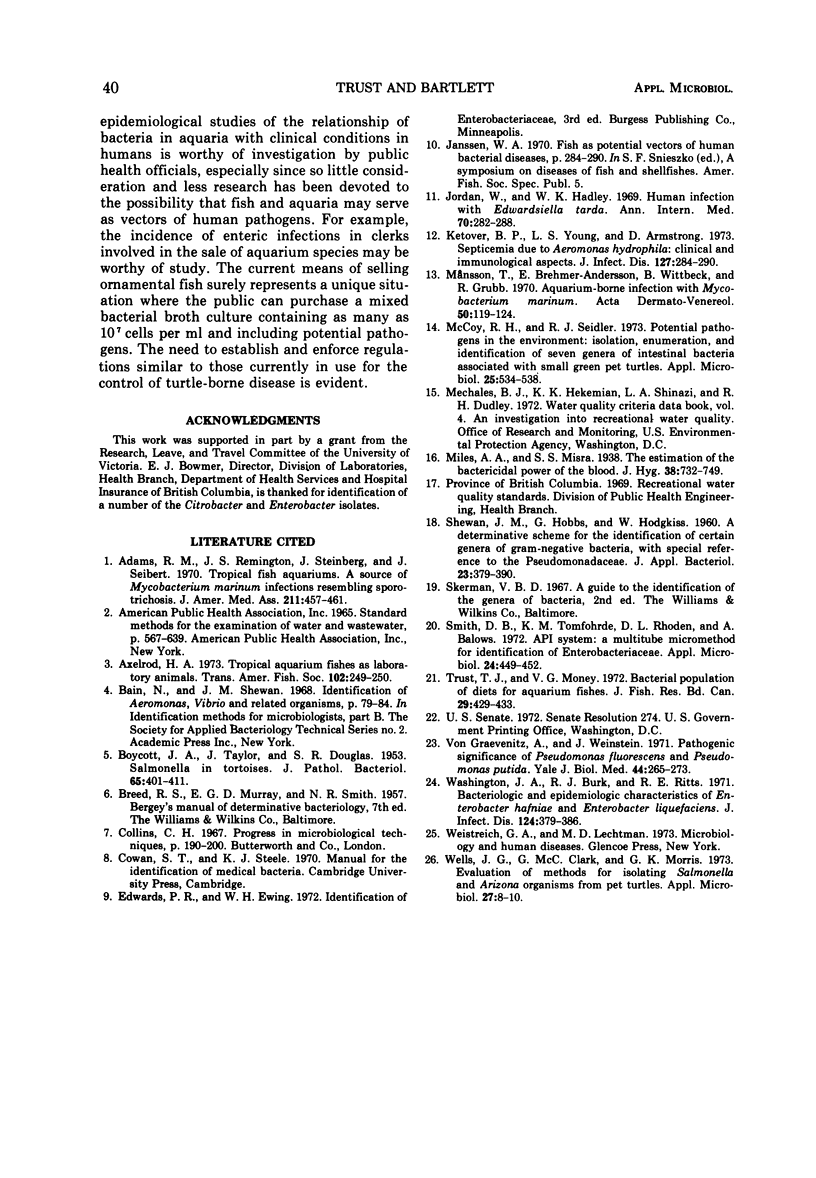
Selected References
These references are in PubMed. This may not be the complete list of references from this article.
- Adams R. M., Remington J. S., Steinberg J., Seibert J. S. Tropical fish aquariums. A source of Mycobacterium marinum infections resembling sporotrichosis. JAMA. 1970 Jan 19;211(3):457–461. doi: 10.1001/jama.211.3.457. [DOI] [PubMed] [Google Scholar]
- BOYCOTT J. A., TAYLOR J., DOUGLAS S. H. Salmonella in tortoises. J Pathol Bacteriol. 1953 Apr;65(2):401–411. doi: 10.1002/path.1700650213. [DOI] [PubMed] [Google Scholar]
- Jordan G. W., Hadley W. K. Human infection with Edwardsiella tarda. Ann Intern Med. 1969 Feb;70(2):283–288. doi: 10.7326/0003-4819-70-2-283. [DOI] [PubMed] [Google Scholar]
- Ketover B. P., Young L. S., Armstrong D. Septicemia due to Aeromonas hydrophila: clinical and immunologic aspects. J Infect Dis. 1973 Mar;127(3):284–290. doi: 10.1093/infdis/127.3.284. [DOI] [PubMed] [Google Scholar]
- McCoy R. H., Seidler R. J. Potential pathogens in the environment: isolation, enumeration, and identification of seven genera of intestinal bacteria associated with small green pet turtles. Appl Microbiol. 1973 Apr;25(4):534–538. doi: 10.1128/am.25.4.534-538.1973. [DOI] [PMC free article] [PubMed] [Google Scholar]
- Månsso T., Brehmer-Andersson E., Wittbeck B., Grubb R. Aquarium-borne infection with Mycobacterium marinum. Acta Derm Venereol. 1970;50(2):119–124. [PubMed] [Google Scholar]
- Smith P. B., Tomfohrde K. M., Rhoden D. L., Balows A. API system: a multitube micromethod for identification of Enterobacteriaceae. Appl Microbiol. 1972 Sep;24(3):449–452. doi: 10.1128/am.24.3.449-452.1972. [DOI] [PMC free article] [PubMed] [Google Scholar]
- Von Graevenitz A., Weinstein J. Pathogenic significance of Pseudomonas fluorescens and Pseudomonas putida. Yale J Biol Med. 1971 Dec;44(3):265–273. [PMC free article] [PubMed] [Google Scholar]
- Washington J. A., 2nd, Birk R. J., Ritts R. E., Jr Bacteriologic and epidemiologic characteristics of Enterobacter hafniae and Enterobacter liquefaciens. J Infect Dis. 1971 Oct;124(4):379–386. doi: 10.1093/infdis/124.4.379. [DOI] [PubMed] [Google Scholar]
- Wells J. G., Clark G. M., Morris G. K. Evaluation of methods for isolating Salmonella and Arizona organisms from pet turtles. Appl Microbiol. 1974 Jan;27(1):8–10. doi: 10.1128/am.27.1.8-10.1974. [DOI] [PMC free article] [PubMed] [Google Scholar]


